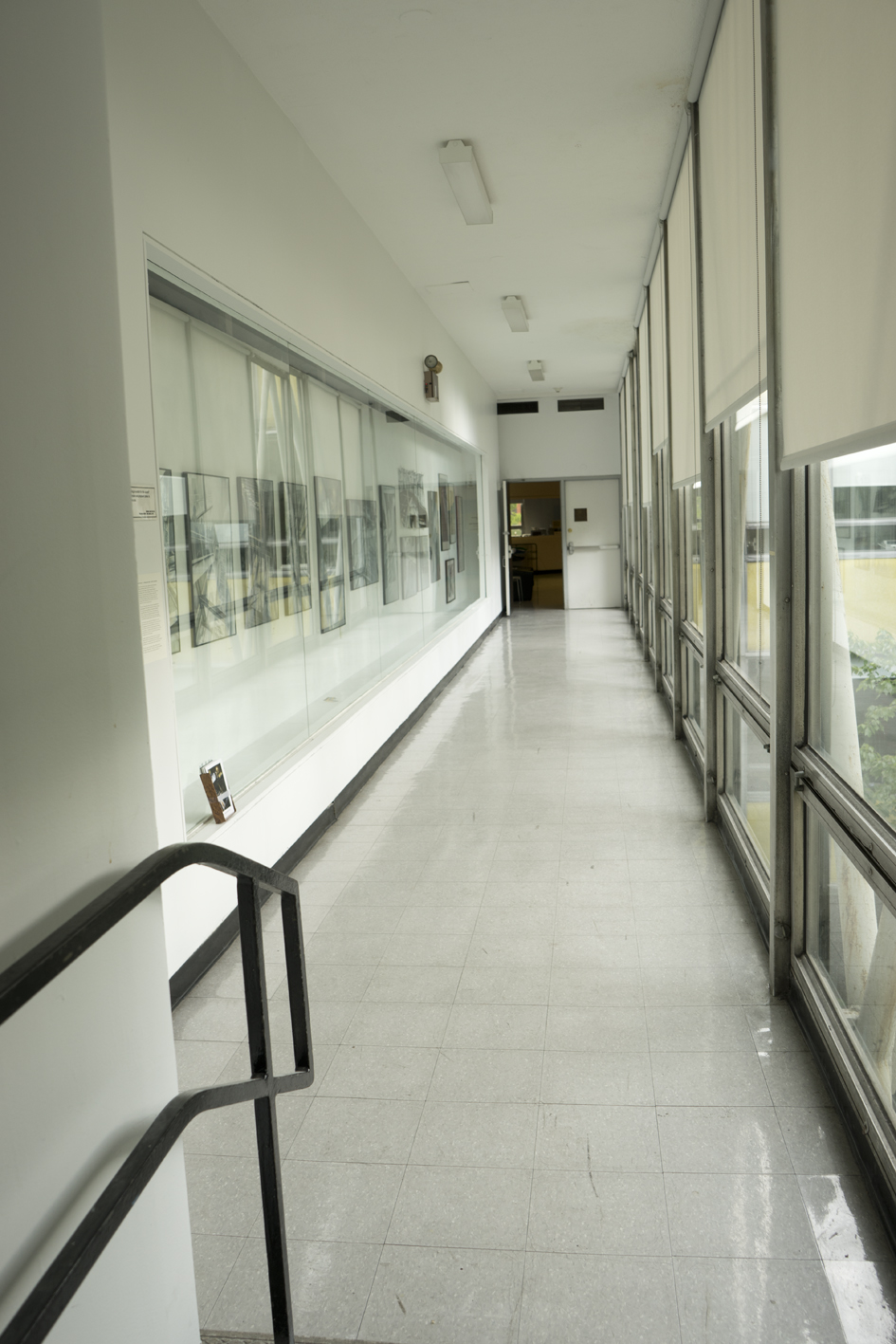
The Skybridges between the 12th and 11th Street buildings consistently engender antithetical feelings for me. One is related to the sudden relief of quiet, light, space, where I feel my back, neck, and shoulder muscles relax and dream a row of lounge chairs to lay back and watch the slice of sky carved by our courtyard. The other is related to the history of the University’s architectural and economic aspirations, the political, social, and intellectual effects of which are still reverberating through our institutional culture.
The 11th Street building was opened in 1960, the same year that The New School was first accredited as a university by the Middle States Association of Colleges and Secondary Schools. The most recent architectural venture, the University Center, was opened in 2014, the same year that The New School is scheduled for re-accreditation. Standing in the Skybridge, with an experiment in critical pedagogy and free or very-low-cost adult education behind me and an expansionist experiment in resource accumulation and upward distribution in front of me, I want to sit down and breathe, to consider what’s being lost, obscured, deliberately forgotten in our voracious momentum towards innovations in the neo-liberal arts.
In 1956, when construction on the 11th Street extension began, The New School President Alvin Johnson declared, “It is not our intention to grow big. We merely want to grow from the inside” (New York Times, Feb. 12, 1956). Thirty years later, when the undergraduate college housed by this extension was being renamed after a financial gift from Eugene Lang, Dean Margaret Jacob explained, “we do not plan to go above 500 [students] or leave the model of the small liberal-arts college” (Newsday, Oct. 21, 1985). One of the main features that attracted Eugene Lang was the college’s commitment to providing low-cost “equal education opportunities to rich and poor” (New York Times, Feb. 17, 1985). Lang now has 1500 students, and costing approximately $56,340/year, is among the most expensive colleges in the country (42nd out of 149 institutions studied in the “Almanac of Higher Education 2013,” Chronicle of Higher Education, June 10, 2014).
When did we decide we wanted to ‘grow big’? When did we stop prioritizing low-cost education for the ‘rich and poor’?
Where has this bridge taken us?
Which way are you facing? Is the future always forward?
Jasmine Rault
Faculty, Eugene Lang College The New School for Liberal Arts

